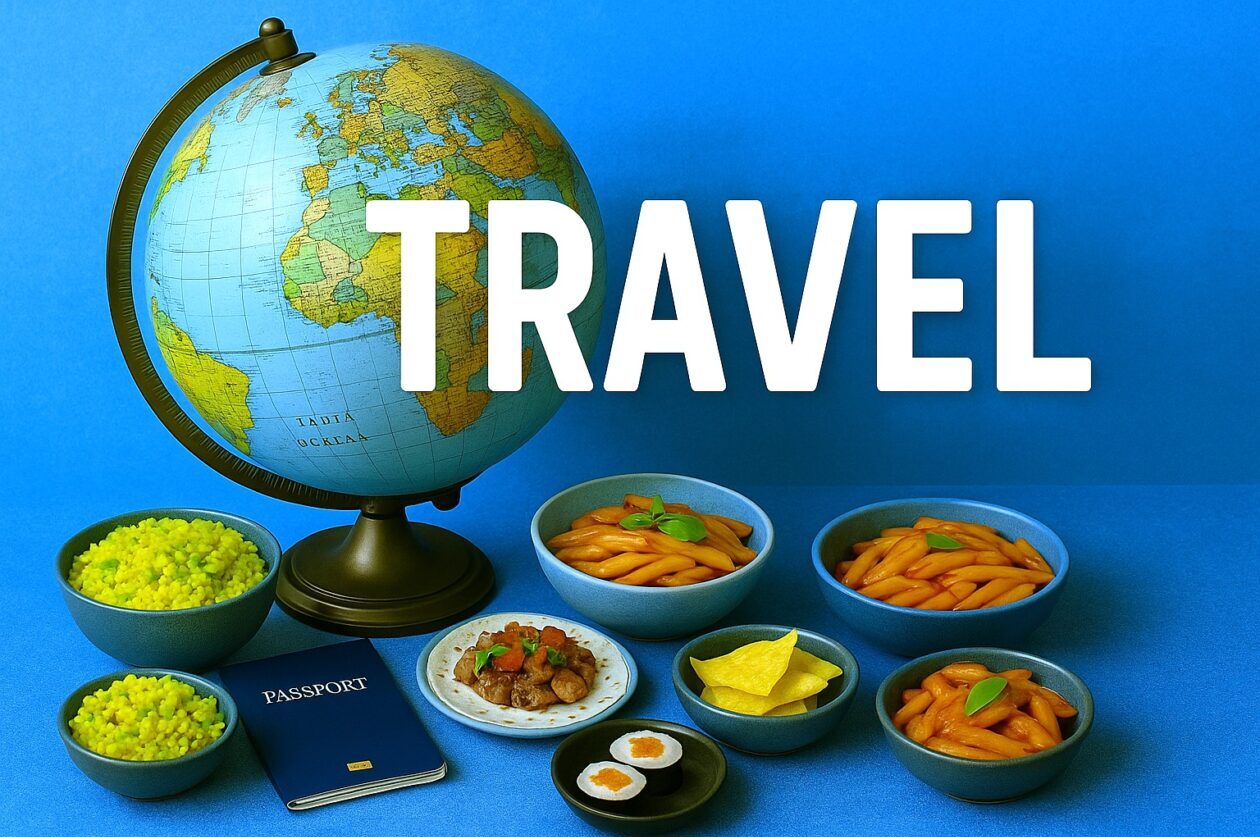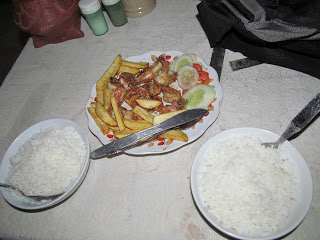1. Delhi: The Meeting Point of the Past and Present
Greetings from Delhi, a city that dances through time rather than merely existing in it. Delhi, the capital of India, has the unique charm of fusing the energy of contemporary life with its rich historical legacy. Here, gleaming skyscrapers, bustling marketplaces, and food vendors that never shut down coexist with historic forts and tombs. Delhi has a lot to offer everyone, whether they are history buffs, foodies, culture vultures, or simply inquisitive tourists.
Must-Visit Places in Delhi
More than just a monument, the Red Fort, which dominates Old Delhi, symbolizes a chapter in India’s regal past. The world of halls, courtyards, and gardens, once filled with the sound of royal footsteps, is hidden behind its massive red sandstone walls, built by the Mughals. Passing through its gates is like going back in time to a time when emperors and dynasties ruled.
One of the city’s most identifiable landmarks is Qutub Minar, the tallest brick minaret in the world. At 73 meters, it has towered over Delhi since the 12th century. Surrounded by the tranquil ruins of early Islamic architecture, it is more than just a historical site—it is a tale inscribed in stone.
Humayun’s tomb is a serene, magnificent, and lush illustration of Mughal architecture. It was India’s first garden tomb, constructed in the 1500s, and served as a model for the Taj Mahal. It is the ideal location to pause and appreciate the harmony of art and nature because of its symmetrical walkways, cascading water channels, and Persian-style elegance
India Gate is a monument to the Indian soldiers who died during World War I. The nearby Rashtrapati Bhavan, which is home to the President of India, lends a hint of colonial charm to the cityscape. Together, they portray a nation’s pride, sacrifice, and progress.
The place that most perfectly captures Old Delhi is Chandni Chowk. This centuries-old marketplace, built by Emperor Shah Jahan, is a colorful medley of chaos and culture. From tempting spice shops to shimmering fabric stalls and mouthwatering street food, there is something fascinating to see around every corner. Enjoy some sweet lassi, try some parathas, and maybe ride a cycle rickshaw while you’re there. It’s messy, magical, and unforgettable.
Delhi’s food culture is as diverse as its history. Enjoy freshly made, crispy jalebis, juicy kebabs, and golgappas, also known as pani puri, to cool off after starting your culinary adventure with hot chole bhature. Here, taking a street food tour is about more than just eating—it’s about getting a sense of the city.
On weekends, the Changing of the Guard, also called the Beating Retreat Ceremony, takes place just outside Rashtrapati Bhavan. The Indian Armed Forces performed a neat, well-coordinated show to the tune of military bands and traditional songs. With the majestic Presidential Palace serving as the backdrop, the ceremony, which proudly displays India’s discipline and legacy, is both elegant and powerful.
Delhi is more than just a destination; it’s an experience. Every street corner, monument, and flavor has a story to tell. And after you’ve been, that story somehow stays with you.
There is no doubt that Agra has a magical quality. In this northern Indian city on the serene banks of the Yamuna River, the stone walls of ancient monuments still echo with love, power, and architectural splendor. Every step you take in Agra reveals stories of emperors, timeless romance, and wonderful craftsmanship.
Taj Mahal
Without seeing the fabled Taj Mahal, a visit to Agra—or even India—would not be complete. Emperor Shah Jahan commissioned this marble marvel, which is frequently referred to as the pinnacle of love, in memory of his adored wife, Mumtaz Mahal. A trip to the Taj is a profoundly moving experience because of the building’s flawless symmetry, the way it shines in the sunlight, and the serene gardens that surround it. At dawn and dusk, its constantly shifting colors are especially remarkable.
Agra Fort
Just a few kilometers from the Taj is another architectural marvel, Agra Fort. This massive red sandstone fortress was once the main residence of the Mughal emperors. Its interior is a maze of royal chambers, lavish audience halls, and courtyards. Here, history comes to life, especially if you stand at the window where Shah Jahan is said to have gazed upon the Taj Mahal during his final years.
Fatehpur Sikri
Just a short drive from Agra is the ghost city of Fatehpur Sikri, which is made almost entirely of red sandstone and is remarkably preserved. Water shortages led to the city’s abandonment after Emperor Akbar built it as the capital of his empire. Its palaces, mosques, and ornate gateways offer a haunting yet intriguing glimpse into the Mughal Empire’s grandeur in modern times.
Itimad-ud-Daulah’s Tomb
Known as the “Baby Taj,” this delicate mausoleum is a lesser-known gem. It was built before the Taj Mahal and served as an inspiration for its design. The tomb’s beautiful lattice screens, elaborate inlay work, and tranquil garden setting make it a tranquil retreat for those who want to avoid the crowds.
Mehtab Bagh
For a stunning view of the Taj Mahal, especially at sunset, cross the Yamuna River to MehtaBagh. The Taj is perfectly aligned with this Mughal garden, which offers a serene and unobstructed view of it. The image of the white marble bathed in golden light will live in your memory forever.
Experiencing Agra Beyond the Monuments
A Taste of Agra
Agra’s culinary scene and history are equally rich. The city’s spicy curries, fragrant biryanis, and street-side kebabs are sure to please foodies. Remember to try petha, a unique dessert made from ash gourd and often flavored with rose or saffron. It is translucent, soft, and wonderfully delightful.
Craftsmanship That Tells a Story
Explore the vibrant markets of Agra to find a world of handcrafted artistic creations. The city is well-known for its marble inlay work, which is reminiscent of the Taj’s craftsmanship. A long history of talent and inventiveness is reflected in leather goods, embroidered textiles, and ornamental mementos
Cultural Celebrations
Agra comes to life during its festivals, particularly during the vibrant Taj Mahotsav. This ten-day cultural fair showcases folk music, dance, crafts, and cuisine from across India. It’s the perfect chance to experience Agra’s vibrant customs and uncover its inventiveness
3. Jaipur: The Pink City Drenched in Royal Grandeur
Since 1876, Jaipur, the capital of Rajasthan, has been a welcoming symbol with a soft pink hue that permeates the city’s buildings as soon as you arrive. But Jaipur is more than a color. The city boasts a regal past, a vibrant culture that permeates every part of the city, and a rich artistic heritage.
Iconic Attractions You Can’t Miss
Amber Fort
Amber Fort, a Rajput architectural masterpiece, is perched atop a hill and reflects off the serene Maota Lake. You’ll feel as though you’ve entered a royal fantasy as you stroll through its expansive courtyards and take in its elaborate halls. The Mirror Palace, also known as the Sheesh Mahal, is particularly magnificent because of its mirrored walls, which scatter light like stars. Many tourists choose to ride a traditional elephant up to the fort for a little extra royal flair.
Hawa Mahal (Palace of Winds)
One of Jaipur’s most photographed landmarks is the Hawa Mahal, which has more than 900 windows and a unique honeycomb façade. Its clever design allows cool breezes to circulate throughout the building, acting as a natural air conditioner during the hot desert months. It was built so royal women could watch street celebrations in secret.
City Palace
The royal family of Jaipur still resides in the City Palace, which is tucked away in the center of the city. With its elaborate frescoes, expansive courtyards, and graceful gateways, this magnificent complex combines Mughal and Rajasthani architectural elements. A section of the palace has been transformed into a museum, showcasing hundreds of years’ worth of artifacts, royal costumes, and antique weapons.
Jantar Mantar
One of the largest and best-preserved observatories of its kind, Jantar Mantar is an architectural wonder built to track the cosmos. Built in the early eighteenth century, it is equipped with massive instruments that were used to measure time and chart celestial bodies precisely. It is a fascinating reminder of how important science and astronomy were in ancient India.
Desert Rides and Folk Shows
There are some genuinely amazing sights to see in Jaipur outside of the palaces and forts, like camel rides around charming lakes or on the outskirts. As the sun sets, take in live music and traditional Rajasthani folk dances. These performances capture the essence of desert culture and are lively, soulful, and energetic.
Shopping in the Bazaars
Jaipur’s markets are a sensory extravaganza. Whether you’re looking for classic block prints, colorful bangles, hand-printed fabrics, or finely crafted jewelry, you’ll find something unique to take home. Shopping hotspots include Tripolia Market, Bapu Bazaar, and Johari Bazaar.
Final Thoughts: A Journey Through the Golden Triangle
Traveling through Delhi, Agra, and Jaipur has a very special quality. Together, these three cities—all very different from one another—provide the most vivid window into India’s past, present, and soul.
Delhi, a city that never stops moving, is where it all starts. It’s lively, loud, and sometimes overwhelming, but that’s part of its allure. One minute you’re navigating Old Delhi’s winding alleys, avoiding rickshaws, and enjoying street cuisine; the next, you’re strolling along peaceful, tree-lined avenues encircled by buildings from the colonial era. Delhi’s energy and unrepentant spirit captivate you despite its layers and complexity.
Agra, however, moves more gracefully and slowly. The Taj Mahal is even more magnificent in person than in photographs, and you can’t help but be moved when you first see it. However, there are other attractions in Agra besides the Taj. The fort, the tombs, and the ancient marketplaces all still have the majesty and grace of a bygone era. The city is still infused with history, and there is a story to be told everywhere you look.
Then comes Jaipur, the city that wears its heritage with pride and color. Everything here feels like a celebration—of art, architecture, tradition, and life itself. From the pink buildings and royal palaces to the vibrant bazaars and folk performances, Jaipur is full of charm. It’s a place where you can spend your mornings exploring ancient forts and your evenings watching the sunset with a cup of chai in hand.
Each city brings its own magic to the journey. Together, they form an unforgettable triangle—one that takes you from the chaos of the capital to the calm of a riverside monument, and finally into the heart of Rajasthan’s royal past.
If you’re thinking about visiting India and you’re not sure where to start, this route is perfect. It gives you a little bit of everything: history, culture, food, color, and soul. And by the end of it, you won’t just have photos—you’ll have stories, memories, and a deeper connection to this incredible country.


